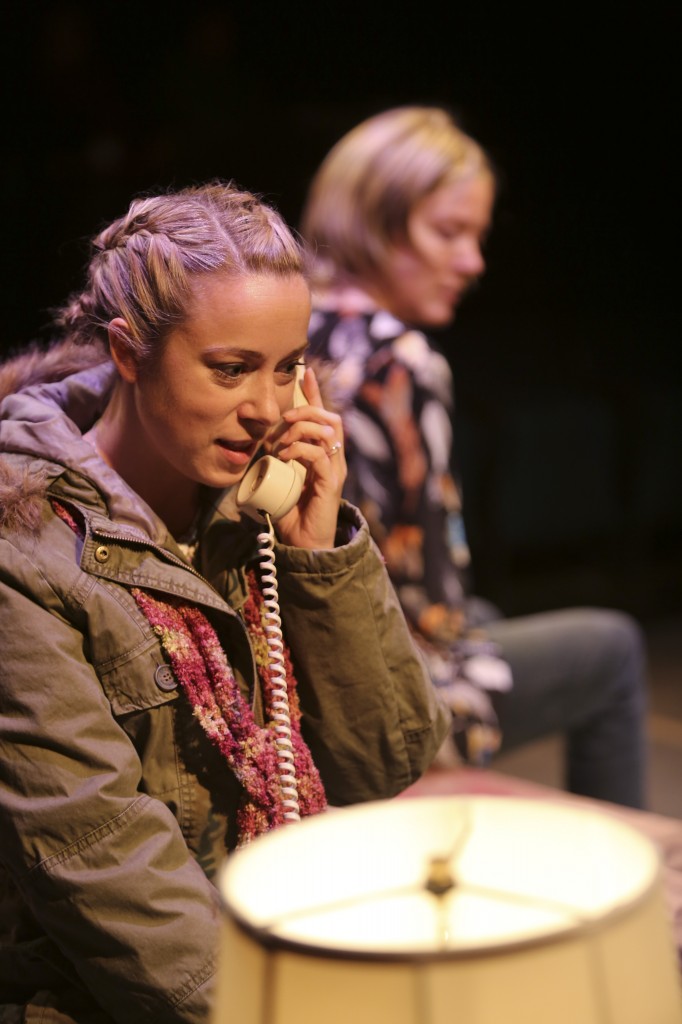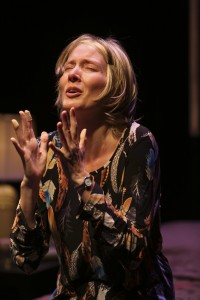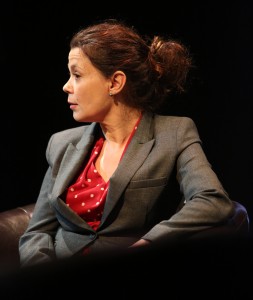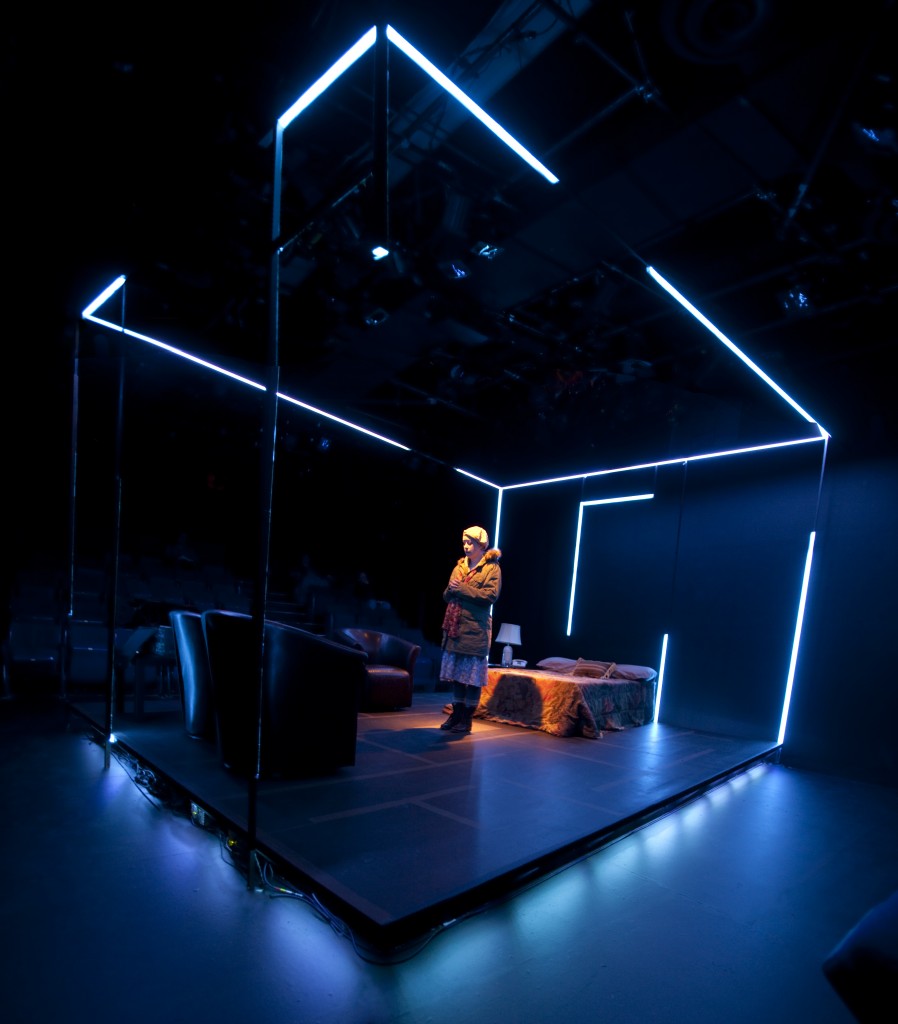
Credit: Tim Matheson
At Pacific Theatre until November 9, 2013
604-731-5518/www.pacifictheatre.org
Posted October 27, 2013
Canadian playwright Daniel MacIvor gets under the skin of his characters Leda, Annie and Carolyn with such intensity that Communion brought me close to tears. Some of us have been both a daughter and a mother so the estranged relationship between the mother, Leda (Diane Brown, co-founder and artistic director of Ruby Slippers Theatre), and the daughter, Annie (Marcie Nestman), can be overwhelmingly painful – at times excruciating – if you’ve been on either side of that mother/daughter equation even briefly.

Credit: Tim Matheson
But there’s also a lot to laugh at, too. Leda, a recovering alcoholic and cancer patient, has a corrosive sense of humour and a caustic wit that cuts through sorrow like a knife. That counterpoint ups the emotional ante considerably.
And despite the fact that we may not be a rehabilitated drunk or swept up in a cult-like religious organization (like Annie) or feeling useless in our work (like Leda’s therapist Carolyn), we know, at times, the sense of being lost, of waiting for life to happen, of feeling like a failure. When Leda, sobbing, on her knees and at the end of her rope cries out to Carolyn, “How can you stand me?”, there was probably not a soul in the audience who didn’t know what that feeling is like. When audiences and actors come together, that’s communion.
Under Roy Surette’s intelligent and sensitive direction, these are three superb performances. Longer and lankier than ever, Brown is so raw and emotionally naked you’ll swear you can see her heart beat. Her intelligence and feistiness are also at play and that makes Leda multi-dimensional, brave and human. Fairly early in the play, Brown has a mile-a-minute monologue, a spewing of pain, anger and frustration that leaves us breathless. Those who were fortunate enough to see Brown in A Beautiful View will know that Brown is made for MacIvor. Or vice versa.

Credit: Tim Matheson
No one does serene, elegant and caring like Kerry Sandomirsky. Her beautifully modulated voice, her smile, her very presence speaks of consideration and kindness. As the therapist Carolyn in this play, the softness is there but it’s hidden behind the character’s professionalism. Or, as Leda insightfully says, “It’s evasive dressed up as serene.” There was probably no one on opening night who wasn’t fervently willing Carolyn to get up and take Leda in her arms. Instead, she coolly offers a box of Kleenex.
Young Marcie Nestman returns to the stage, after a brief hiatus, in the role of Leda’s troubled daughter Annie (who calls herself Ann now she’s hooked up with the Fellowship and boyfriend Bud). All three of these women are grappling with life’s complexities but no one as furiously as Annie who harbours deep resentment against Leda who was drunk and absent throughout Annie’s childhood. In the second of the three scenes, Nestman appears in a cotton dress over trousers, woolly sox, braids and boots; she is a hurt little girl turning to Bud and prayer for solace. In the third scene, the little dress is gone, the hair is down and scared little Annie has become angry, defiant Annie. Nestman will break your heart but by the end of the play a small gesture opens the door just a crack to let a little light shine through.
Light is always an important element in a MacIvor play. John Webber designed the lights for MacIvor’s Beautiful View (with the dynamite duo of Brown and Colleen Wheeler) and he designed the lights for Communion, too. Doorways and the framework of the room are illuminated with glowing tubes of light – like the skeleton of a space. It’s clean and effective and deceptively simple.
Presented by Pacific Theatre, this Ruby Slippers Theatre production is courageous in its exploration of what it means to live – and die – consciously.

Featured: Marcie Nestman
Credit: Tim Matheson

